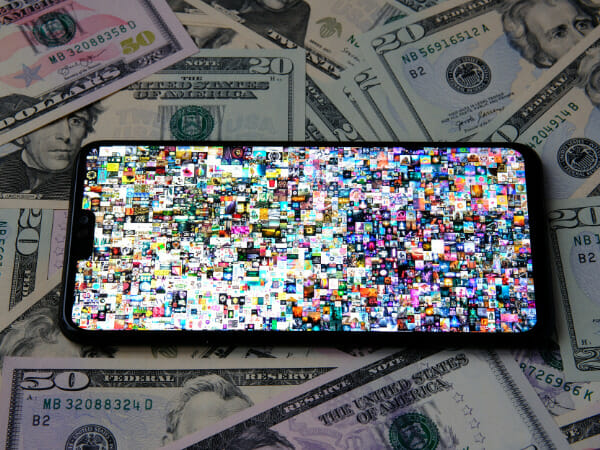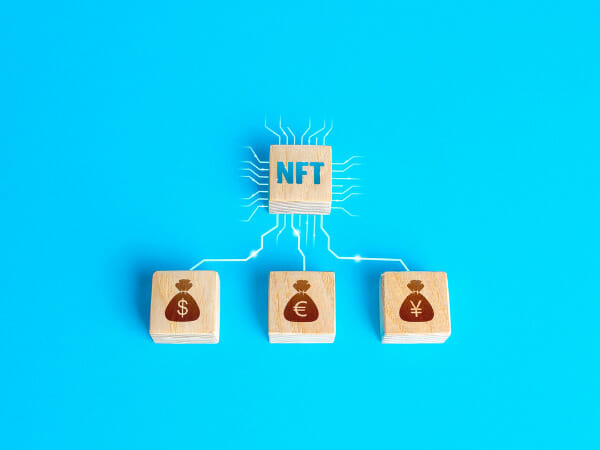NFT environmental impact – the NFT climate controversy
Many people are ranting about the environmental impact of NFTs nowadays. Search the issue on Google, and you’ll find hundreds of articles decrying how bad NFTs are for the environment. What are the reasons behind this outrage, and are they still valid today? If you check beyond the scathing headlines, you’ll find many sources that support NFTs.
NFTs are just one example of blockchain technologies. The crypto market allows boundless innovation. Every day, you can find more cryptocurrencies that are better than before. Take a closer look, and you’ll see that many of them are becoming more energy-efficient while hosting NFTs!
Before I explain the buzz around the environmental impact of NFTs, I will explain what they are and how they work. Then, I will discuss why people think NFTs are bad for the planet. Later, you’ll see that many of these arguments do not hold anymore. NFTs and other crypto techs have come a long way to serve people and our environment better.
The environmental impact of NFTs

You may have heard of NFTs after seeing news of people making millions from selling their digital art. Yet, many people still don’t know what they are and how they work.
NFT stands for “non-fungible token,” a piece of digital media with ownership recorded on a blockchain or crypto network. This lets you own a unique copy despite free replicas available.
NFTs have many purposes, not just in the art world. For example, a country could use it for elections. It could turn ballots into NFTs to prevent cheating.
Events like concerts could turn their tickets into NFTs to prevent scalping. You may not sell a ticket for profit at a later date if it will only work for the person who bought it first.
These aren’t as interesting as selling a piece of art for millions of dollars, so more people are focused on NFT art. In turn, their outlook on NFTs and cryptocurrencies became flawed as well.
For reference, eco crypto and nft info here:https://t.co/woviExf2YVhttps://t.co/wz1PkWRC8jhttps://t.co/St5IeZrohX
— Mike Shinoda (@mikeshinoda) January 8, 2022
This is also the reason for the NFT environmental impact complaints. People don’t know much about how NFTs, Bitcoin (BTC), and Ethereum (ETH) works.
They complained about the huge electricity consumption of BTC and ETH. People often quote that it’s on par with entire countries! Those folks may even cite recent events.
Let’s take the Kazakhstan protests in January 2022. One of its leaders said it added 8% to domestic energy consumption. That’s why Kazakhstan became stricter on bitcoin miners.
What’s more, many people took to Twitter to decry the NFT environmental impact. They even took their frustration on art platforms like ArtStation and its plan to host NFTs.
It even promised to pay for carbon offsets. These are actions that are meant to compensate for their carbon emissions. Unfortunately, this didn’t change the minds of the anti-NFT crowd.
People kept tweeting how much they disliked ArtStation’s climate control plan for NFTs. Some artists like Memo Akten expressed their dislike for ArtStation NFTs as well.
Read More: How NFTs Are Bringing A New World Of Art
Flaws of the NFT environment impact argument
A rebuttal to the ecological cost of NFTs. Tl,dr; not as bad as other sources of artist income like merch.https://t.co/chGFwDcihJ
— Andrew Price (@andrewpprice) February 27, 2021
Nowadays, the NFT impact outrage continues. If you look beyond the bashers and complaints, you’ll see that their viewpoints are now arguable.
I said that NFTs have ownership tied to a crypto network. When people talk about it, they often mention Bitcoin. It has high electricity usage because of its proof-of-work model.
It runs on a network that relies on people willing to operate it. They use their PCs to confirm Bitcoin transactions to earn Bitcoin in return.
They’re also called miners, and they need a lot of computer power to do their work. That’s why they buy powerful machines that use so much energy. In turn, they leave a huge carbon footprint.
Most people don’t know that most NFTs are linked to the Ethereum blockchain. It followed PoW back then, but it will soon replace it with the proof-of-stake model.
Instead of using energy-guzzling computers, people will just need to deposit Ethereum coins or Ethers. Similar to a bank savings account, it earns interest as time passes.
This would mean that confirming Ethereum transactions won’t be as energy-intensive as before. At the time of writing, ETH staking will likely arrive in 2022 as an upgrade called “The Merge.”
Ethereum has staking right now, but it’s not on the main network yet. If you have 32 ETH, you can stake on the overall Ethereum 2.0 upgrade. If you have fewer, you may do it on crypto exchanges.
Once that comes, Ethereum will become more useful while needing less energy. As a result, it could reduce the environmental impact of NFTs!
What are the benefits of NFTs?
We’ve talked enough about what’s bad about NFTs, so let’s now cover the good. Artists are also professionals who deserve adequate payment for their skills, and it’s made easier with NFTs.
Talented folks can easily share their work on various online platforms. Sadly, it’s hard to keep track of the people making money from their work without permission.
They could prevent this by turning their work into NFTs. It’s tied to a crypto network, so people who want one from the original creator will have to ask that person first.
What’s more, NFT platforms like OpenSea make sure that artists earn each time artwork exchanges hands. In other words, it makes earning royalties faster and easier.
Another reason why NFTs are great is that it lets artists get closer to the big names in the art world, such as Christie’s. This could be their big break to earn millions from their work!
Can I make NFTs too?
Look outside the rants about NFT’s environmental impact, and you’ll see that it has a greater benefit on the art world. NFTs make it easier for people to enter the art scene!
We still have art exhibits nowadays, but they’ve been as exclusive as they were for years. It won’t be easy to feature your work in these events.
What’s more, we couldn’t host them the usual way because of the COVID-19 pandemic. This is why people just show off their work on the internet nowadays.
As I said, people publish their work on online platforms. Some go one step further by putting them on Metaverse platforms like Decentraland.
It makes sense because people spend more time on the internet than ever. Even better, posting online art is much easier, and you could earn more money if you turn it into an NFT!
Platforms like OpenSea can help with this. It’s not just for images because you may also turn a song or video into an NFT. Here’s how it works for OpenSea:
- Get a digital wallet like MetaMask so that you can store cryptos.
- Create an account on a crypto exchange like Binance or Coinbase.
- Buy Ethers from it.
- Transfer ETH to your MetaMask.
- Go to the OpenSea website to create an account for it.
- Place your file in your OpenSea account. It supports the following formats: JPG, MP4, WEBM, PNG, GIF, SVG, WAV, OGG, MP3, GLB, and GLTF.
- Fill out the main details like the name, external link, and description.
- Add other details you like, such as stats and levels. You may also offer your NFTs as a collection.
You may also buy and sell on the platform. Like creating and posting NFTs, you’ll need MetaMask and cryptos for NFT transactions.
Related Articles
Final thoughts
As cryptos improve, they will reduce the environmental impact of NFTs. If you look at the crypto market as a whole, you’ll see that it’s trying to become eco-friendly too.
For example, El Salvador is now building a bitcoin mining center powered by volcanoes. Once it’s done, the country will be able to mine BTC without leaving too much carbon!
You’ll find a lot more good news about crypto from Inquirer USA articles. What’s more, they will keep you up-to-date with the latest trends happening worldwide!



